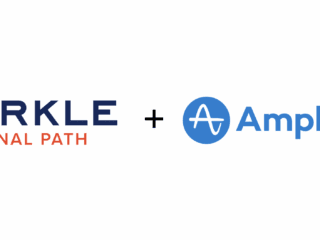In today’s competitive digital landscape, maximizing your marketing return on investment (ROI) is essential for sustained business growth. Predictive analytics, a powerful tool that leverages historical data and machine learning algorithms, can help you forecast future trends, optimize your marketing strategies, and, ultimately, enhance your ROI. In this post, we’ll explore how you can effectively use predictive analytics to boost your marketing efforts.
Understanding Predictive Analytics
Predictive analytics involves analyzing historical data to predict future outcomes. By applying statistical algorithms and machine learning techniques, businesses can uncover patterns and trends that inform decision-making. This approach allows marketers to anticipate customer behavior, personalize campaigns, and allocate resources more efficiently.
Benefits of Predictive Analytics in Marketing
- Improved Targeting and Personalization
Predictive analytics helps identify the most promising customer segments, enabling you to tailor your marketing messages to specific audiences. This targeted approach increases engagement and conversion rates, leading to higher ROI. - Optimized Marketing Spend
Predictive analytics allows you to allocate your budget more effectively by predicting which channels and strategies will yield the best results. This ensures that your marketing spend is directed towards the most impactful activities, reducing waste and maximizing returns. - Enhanced Customer Retention
Predictive models can identify at-risk customers and suggest interventions to retain them. By addressing potential issues before they escalate, you can improve customer loyalty and lifetime value, contributing to a higher ROI. - Informed Decision-Making
Predictive analytics provides valuable insights that inform strategic decisions. Whether launching a new product, entering a new market, or adjusting your pricing strategy, data-driven decisions are more likely to succeed.
Steps to Implement Predictive Analytics in Your Marketing Strategy
- Define Clear Objectives
Start by identifying the specific marketing goals you want to achieve with predictive analytics. Whether it’s increasing sales, improving customer retention, or optimizing ad spend, having clear objectives will guide your efforts and ensure alignment with your overall business strategy. - Gather and Prepare Data
Collect relevant data from various sources, including customer interactions, transaction history, and online behavior. Ensure your data is clean, accurate, and well-organized. Data preparation is crucial for building reliable predictive models. - Choose the Right Tools and Techniques
Based on your objectives and data, select the appropriate predictive analytics tools and techniques. Common techniques include regression analysis, decision trees, and clustering. Modern tools like Google Analytics 4, Tableau, and R offer powerful capabilities for predictive modeling. - Build and Test Models
Develop predictive models using historical data. Test these models to evaluate their accuracy and effectiveness. Validate your models regularly to ensure they remain relevant and reliable as market conditions change. - Integrate Insights into Your Marketing Strategy
Use the insights generated by your predictive models to inform your marketing strategy. This could involve personalizing email campaigns, optimizing ad placements, or adjusting pricing strategies. Continually monitor and adjust your approach based on real-time data and feedback. - Measure and Refine
Track the performance of your predictive analytics initiatives against your defined objectives. Use key performance indicators (KPIs) to measure success and identify areas for improvement. Refining your models and strategies over time will enhance their accuracy and impact.
Real-World Examples of Predictive Analytics in Action
- Netflix uses predictive analytics to recommend content to its users. By analyzing viewing habits and preferences, Netflix can suggest movies and TV shows likely to resonate with individual viewers, driving higher engagement and subscription retention.
- Amazon leverages predictive analytics to forecast demand and optimize inventory management. This ensures that popular products are always in stock, enhancing customer satisfaction and sales efficiency.
- Coca-Cola uses predictive analytics to optimize its marketing campaigns. By analyzing consumer data, Coca-Cola can tailor its messages to different audience segments, improving the effectiveness of its promotions.
Will Predictive Analytics Work for Your Business?
Predictive analytics offers a powerful way to maximize your marketing ROI by providing actionable insights that drive more effective and efficient marketing strategies. By understanding your customers, optimizing your spending, and making data-driven decisions, you can stay ahead of the competition and achieve sustained growth. Start leveraging predictive analytics today to unlock the full potential of your marketing efforts.
We would love to show you how we use predictive analytics to optimize and boost conversions for your website and app properties. Drop us a line, and we will get you in touch with an expert who will provide you with a no-cost customized website assessment.
Author

Wesley Hall has over fifteen years of Digital Marketing strategy and implementation experience having worked in both corporate and consulting positions. Wesley specializes in advanced JavaScript programming and he is an industry thought leader for Tag Management Systems. Wesley is a staunch advocate for data governance and reporting standards and he regularly lectures about Digital Marketing best practices. Wesley is a sometimes overly enthusiastic soccer fan and he is an FAA licensed drone pilot.
View all posts















